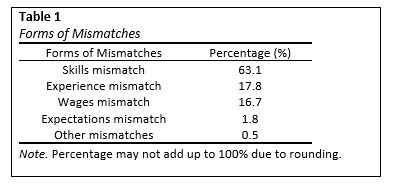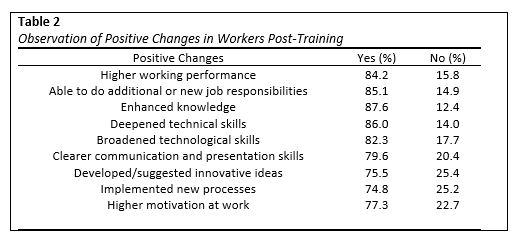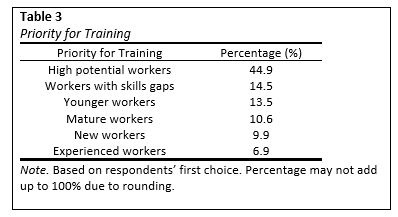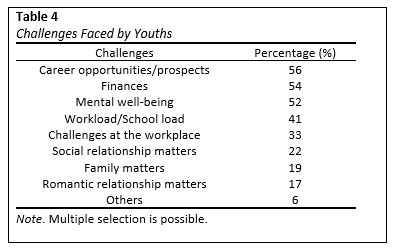Lifelong Learning through a Global Lens
ETHOS Digital Issue 10, Mar 2023

Challenges for a Future-facing Workforce
In the past, a person’s career has been seen as a series of stepping stones, with time spent at each stone and stage. However, today’s careers are more like running on a moving treadmill. Regardless of age, you must continue to keep pace and learn lest you fall off when you stop.
Singapore’s latest labour market report indicates that there are more job vacancies than there are job seekers. The number of job vacancies has increased over the past two years, hitting a new high of 128,100 in March 2022.1 This may have been an outcome of the ‘Great Resignation’: a global trend of people quitting their jobs since the start of the COVID-19 pandemic to seek better work-life balance after a prolonged period of working remotely without commuting.2 Anecdotally, I have found, from LinkedIn, that many of my connections have been moving to new jobs recently.
But there are also accounts of people who have been displaced but have yet to find new employment, due to a mismatch in their skills. In NTUC’s recent study “Continuing Education and Training (CET): Now and What Could be Next” with 564 business leaders, 63.1% of business leaders are concerned about skills mismatch (see Table 1).3
Adopting a mindset of lifelong learning is imperative to addressing the issue of skills mismatch. Singapore has made considerable strides towards the development of lifelong learning with our national movement, SkillsFuture Singapore, seeking to change how people view skills, jobs and learning. Singapore wants to develop a culture of lifelong learning, where people get satisfaction in life from learning at every stage regardless of where they start, satisfaction from mastering the skills, and satisfaction from being part of a community of learners. As the late Mr Lee Kuan Yew put it in his 1977 speech in Parliament, “an educated man is a man who never stops learning and wants to learn”.4
Many other countries are also on a journey to help their citizens master skills throughout their careers and develop a culture of lifelong learning. With Singapore still at an early stage of our SkillsFuture journey, we have a lot to learn from others.5 We have therefore looked at key strategies adopted—both in Singapore and in different parts of the world—to promote lifelong learning.
Based on our research, these can be encapsulated as the “5As”:
- Appropriate Balance between Training and Work
- Access to Training for All Workers
- Ageing Workforce Investment
- Approaches to Foster Lifelong Learning
- Adapting Education
Appropriate Balance Between Training and Work
With the half-life of skills shortening, training is essential to allow every worker to expand their knowledge base, stay current, and enhance their job abilities. This is how they can be more productive in the workplace, helping them to stay employable and their companies to thrive. Research has shown that for up to three years following training,6 business revenue is on average 0.7% higher for every 10% of the local workforce that was supported for training. Furthermore, our enterprises’ labour productivity has increased by 2.2% on average annually for two years.7
In Singapore, our study on Continuing Education and Training8 also shows that a majority of business leaders report observing positive changes in their workers post-training (see Table 2), such as higher working performance (84.2%), the ability to do additional or new job responsibilities (85.1%), and enhanced knowledge (87.6%).
However, only 50.9% of business leaders had sent their workers for training in the past six months. Out of those who did send workers for training, on average only 33.6% of their workforce in the company attended the training. This suggests that 66.4% of workers in the company were missing out on training. Employers must find the appropriate balance between training and work for their workers, tilting towards greater workforce readiness, relevance, and resilience.
Notably, European governments have set a legal minimum requirement for training for all workers. For example, the Flexible and Workable Work Act in Belgium mandates that firms give every employee at least five days of training annually; Portugal’s legal requirement for paid training hours per year is 35 and the legal minimum is five days annually in Switzerland.9
The least likely to train are those who most need it in order to get or keep a job.
Access to Training for All Workers
According to a study by the OECD on training and employment performance, measures geared at advancing employees’ skills have a positive impact on employment performance.10 However, only over 20% of adults with low skills participated in training, compared to over 40% of adults with medium or high skills.11 Older adults, lower-wage workers, employees of SMEs, temporary workers and the unemployed are the ones that typically fall behind in training and learning opportunities. The least likely to train are those who most need it in order to get or keep a job.
To address the issue of lack of training for workers who require it, Norway expanded their career counselling programme for workers.12 Early career counselling in the educational process has the potential to minimise dropout rates and improve choices made in school. Seniors who receive career counselling are better able to adapt to the shifting skill demands in the labour market, leading to higher employment mobility and remaining longer in employment.
The study by Yang et al.13 highlights that workers with skills gaps are not the top priority for training according to business leaders (see Table 3). This puts a strain on the very workers who would have benefited from training. Therefore, we must allow greater access to training for all workers, especially workers with skills gaps and mature workers, to enhance their employment and employability, because every worker matters.
Ageing Workforce Investment
Many developed countries, such as Japan, are facing the issue of an ageing workforce. Japan has at least 30% of its population aged 60 and above. By the year 2050, 62 countries, including China, will reach that milestone.14 To enhance the employability of mature workers, the United Kingdom introduced the National Institute of Adult Continuing Education (NIACE)/Union mid-life career review initiative.15
In the same vein, it is projected that 1 in 4 Singaporeans will be aged 65 or older by the year 2030.16 The NTUC-SNEF PME taskforce, which I co-chaired, has found that mature PMEs, aged 40 to 60, face challenges such as difficulties in searching for suitable employment and are concerned about job security.17 More than 8 in 10 respondents have expressed difficulties in finding another job that matches their skills or interests. Hence, further investment should be made to support our people’s journey of lifelong learning, especially mid-careerists amid an ageing workforce.
Approaches to Fostering Lifelong Learning
Needs for training and education vary, depending on workers’ profiles, life stages, and demographics. It would be impossible to accommodate every worker's needs with a one-size-fits-all strategy.
Germany and Italy provide helpful definitions of the many types of lifelong learning and the various workers they cater to. For example, Germany categorises lifelong learning in four ways.18 “Maintenance Training” and “Further Education” are targeted towards people who are already employed. “Retraining” primarily applies to workers who are at risk of losing their current position, and “Re-entry Qualification” is mostly relevant to individuals who are on long-term leave. Clearly defining the various forms of lifelong learning, and the different categories of workers they are meant for, can better provide more targeted support and broaden training opportunities for every worker.
In Singapore, our workforce is made up of workers of varied profiles. We must adopt a more targeted lifelong learning strategy for different worker segments to ensure that everyone has access to a level playing field for jobs, while at the same time balancing companies' manpower needs in the immediate and longer term.
Clearly defining the various forms of lifelong learning, and the different categories of workers they are meant for, can better provide more targeted support and broaden training opportunities.
Adapting Education
Needs for training and education vary, depending on workers’ profiles, life stages, and demographics. It would be impossible to accommodate every worker's needs with a one-size-fits-all strategy.
When we speak of the future, we turn to our youth. The dual education system and apprenticeship programme in European countries such as Germany and Switzerland are renowned for equipping youth with the relevant skills, bridging the gap between industry and education.
Today, young people are coming of age in a world plagued by uncertainties. In our study conducted with more than 1,000 young people aged 18 to 35 years old, issues such as career prospects and opportunities surfaced as their top concerns (see Table 4).19
In Singapore, providing tailored education for our young people has taken on increased importance. Our Institutes of Higher Learning (IHLs) are set to evolve over the next few years (and may well become Institutes of Continuous Learning). We can expect to see more flexible courses that span across multiple disciplines and enable our students to adapt and respond to changing industries and demand.20 In short, we need to adapt our education system to match continually changing industry demand and needed skills, in tandem with the transformation of work and workplaces.
We can expect to see more flexible courses that span across multiple disciplines and enable our students to adapt and respond to changing industries.
Role of the Public Sector in Supporting Lifelong Learning
A skilled workforce is essential for the economic development of Singapore. The public sector in Singapore can play an integral role in in supporting lifelong learning and helping workers acquire the skills and knowledge they need to thrive in the workforce. Here are three potential strategies for doing so:
1. Creating and deepening partnerships
Public agencies can partner with private companies and trade unions to provide on-the-job training and apprenticeships, which can help workers acquire skills and experience while they work. This will benefit workers’ careers and help them adapt to changing demands.
For example, Germany’s dual education and vocational training has been a trailblazer, championing on-the job training and apprenticeships. Over 50% of Germans enter the dual vocational and educational training programmes (VET) as a route to employment, embarking on apprenticeships with a company, of which they spend about 50% on learning “on the job“ and 50% at a vocational training school. This mix of practical and theory-based learning have allowed trainees to acquire skills that tend to be well matched to the needs of employers, while also leading to low youth unemployment and higher skill levels. The German dual system requires deep, complex coordination between employers, the government, the schools, trade unions and chambers of trade and industry.
2. Endorsing micro-credentials
Public agencies can also support lifelong learning by working with the IHLs to design and offer micro-credentials, such as digital badges or certificates, which can offer recognition for skills and knowledge. This makes it easier for workers to showcase their achievements to current and future employers.
For example, the Council of the European Union has adopted a recommendation on micro-credentials for lifelong learning and employability. Ireland will be the first European country to establish a coherent National Framework for quality assured and accredited micro-credentials.
3. Providing resource support
The public sector can allocate funding and resources to support workers to pursue new learning opportunities, especially our mid-careerists and at-risk workers. Protected time off for training and recognition of non-degree learning/training will encourage more to undergo training and help strengthen their career progression.
Singapore’s Budget 2023 features a top-up of S$4 billion to the National Productivity Fund meant to enable firms to upskill workers; it has also introduced a new pilot entity known as Job-Skills Integrators to address the challenge of workers not knowing what training programmes to go for, or what competencies and skills they need to secure better jobs. Workers will be equipped as labour market intermediaries, dubbed Jobs-Skills Integrators (JITs), who will work closely with industry, training and employment facilitation partners to bridge industry manpower and skill gaps, and optimise training and job placement for workers. This project will be piloted with higher concentrations of mature workers and SMEs. It aims to ensure that training translates into better employment and earning prospects, strengthening workers’ career prospects and progression.
Labour Movement Will Walk alongside Workers in their Lifelong Journey
Companies looking to transform their workforce and help their workers pursue lifelong learning can turn to NTUC for support. We have recently established the NTUC’s Training and Placement ecosystem—comprising NTUC’s e2i (Employment and Employability Institute), NTUC LearningHub (LHUB), NTUC Industry Training and Transformation (IT&T) and the Ong Teng Cheong Labour Leadership Institute (OTCi). This ecosystem is a one-stop intermediary to operationalise business and workforce transformation, as well as to better serve workers’ training and jobs matching needs.
With workers’ interests at our core, the Labour Movement remains committed to walk alongside workers in their lifelong learning, helping them acquire better skills, secure better jobs and pursue better careers.
NOTES
- Ministry of Manpower, “Labour Market Report First Quarter 2022”, June 17, 2022, https://www.mom.gov.sg/newsroom/press-releases/2022/0617-labour-market-report-1q-2022.
- S. Ellerbeck, “The Great Resignation Is not Over: A Fifth of Workers Plan to Quit in 2022”, World Economic Forum, June 24, 2022, https://www.weforum.org/agenda/2022/06/the-great-resignation-is-not-over/.
- Chew Hui Min, “10 Quotes from Mr Lee Kuan Yew's 'awesome' 1977 speech in Parliament”, The Straits Times, March 26, 2015, https://www.straitstimes.com/singapore/10-quotes-from-mr-lee-kuan-yews-awesome-1977-speech-in-parliament.
- A. Lim, “Singapore Can Be World Leader in Cultivating Lifelong Learning, Says Tharman Shanmugaratnam”, The Straits Times, April 25, 2019, https://www.straitstimes.com/politics/singapore-can-be-world-leader-in-cultivating-life-long-learning-says-tharman-shanmugaratnam.
- S. Tan, “Firms that Send Workers for Training See Revenue Rise, Higher Productivity: SkillsFuture-MTI Study”, The Straits Times, July 8, 2021, https://www.straitstimes.com/singapore/jobs/firms-that-send-workers-for-training-see-revenue-rise-higher-productivity.
- Ibid.
- See Note 3.
- OECD, “Enhancing Employability Report Prepared for the G20 Employment Working Group”, 2016, https://www.oecd.org/els/emp/Enhancing-Employability-G20-Report-2016.pdf.
- OECD, “Getting Skills Right: Future-Ready Adult Learning Systems” 2019, https://www.oecd.org/els/emp/skills-and-work/adult-learning/Policy-Brief-Future-ready-adult-learning-2019-EN.pdf."
- Cedefop, “Inventory of Lifelong Guidance Systems and Practices—Norway”, CareersNet national records, 2020, https://www.cedefop.europa.eu/en/publications-and-resources/country-reports/inventory-lifelong-guidance-systems-and-practices-norway.
- See Note 3.
- J. A. Jenkins, “An Ageing Workforce Isn’t a Burden. It’s an Opportunity”, World Economic Forum, January 3, 2019, https://www.weforum.org/agenda/2019/01/an-aging-workforce-isnt-a-burden-its-an-opportunity/
- World Economic Forum, “Accelerating Workforce Reskilling for the Fourth Industrial Revolution: An Agenda for Leaders to Shape the Future of Education, Gender and Work, 2017, https://www3.weforum.org/docs/WEF_EGW_White_Paper_Reskilling.pdf.
- S. Boh, “1 in 4 Singaporeans Aged above 65 Developed Chronic Disease in Past Year: Study”, The Straits Times, November 11, 2016, https://www.straitstimes.com/singapore/one-in-four-singaporeans-aged-above-65-developed-chronic-disease-in-past-year-study.
- P. Tay, “Can We Do More to Help PMEs Overcome Disruption and Discrimination in the Next Normal? Singapore Labour Journal 1 (2022), 83–89.
- Refer to Note 12.
- NTUC and SUTD, Power to Participate: Building Young Voices, Choices and Experiences (National Trades Union Congress: 2022).
- H. M. Ang, “Pace of Acquiring Skills and Knowledge must Intensify, Continual Learning Will Help People remain Relevant: Chan Chun Sing”, Channel News Asia, February 10, 2022, https://www.channelnewsasia.com/singapore/acquiring-skills-knowledge-intensify-continual-learning-chan-chun-sing-2489816.





